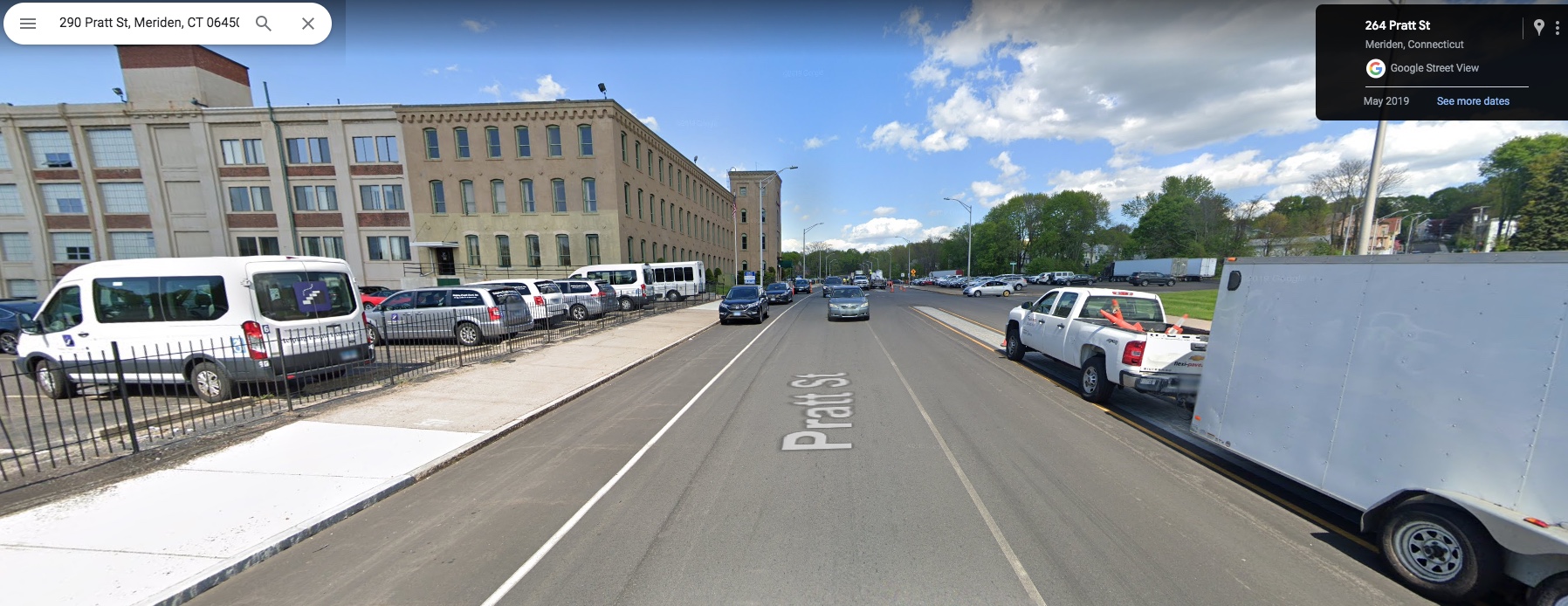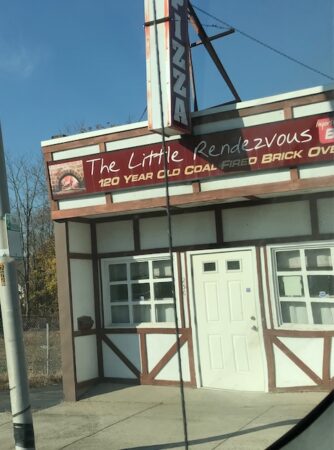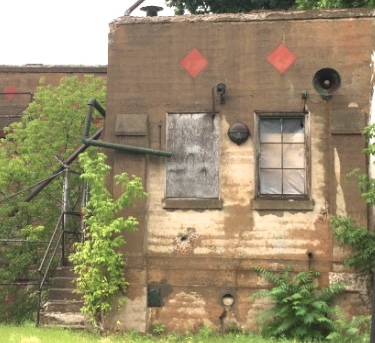Then & Now: Pratt Street Mill And New Departure, Meriden, Connecticut
Let's close out summer, remember.
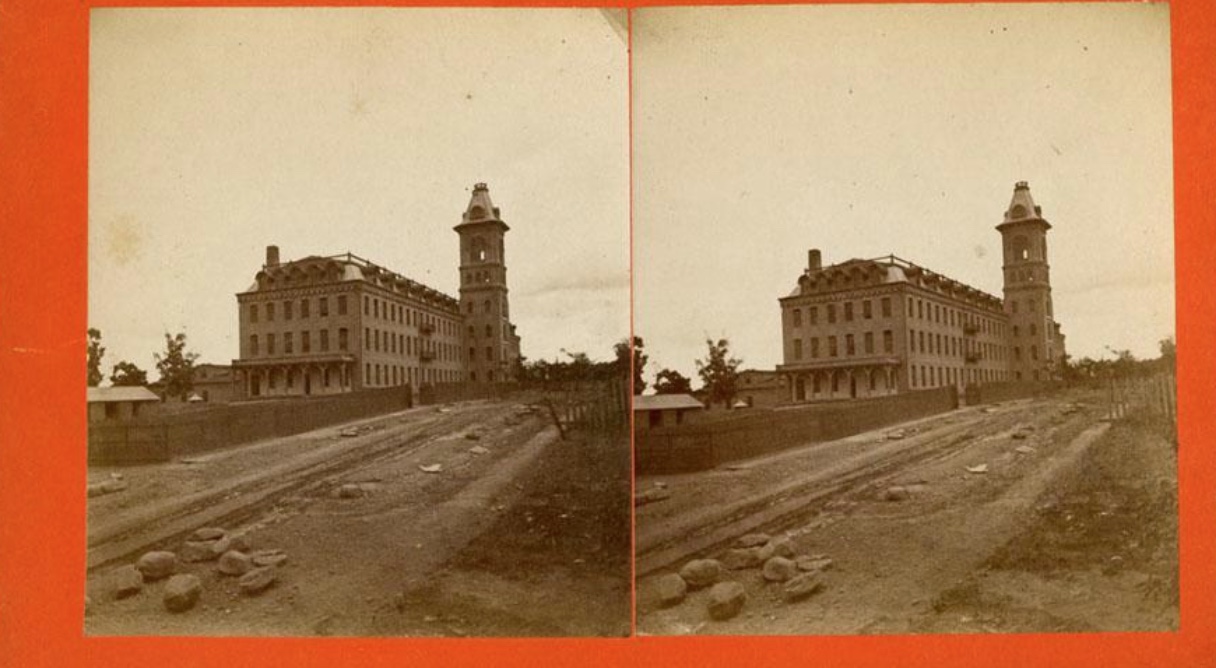
That view looks familiar. Compare with image below. From The Newman S. Hungerford Museum Fund. Included in photographs of Meriden and West Meriden… the Meriden Woollen Mill… Part of the John S. Craig Collection. Via eMuseum, Connecticut Museum of Culture and History, linked to collections.
Imagine sweltering hot summer day on a factory floor. Big multi-paned windows open, industrial fans on. The scent of machine oil and the noise of precision manufacturing in progress. A beehive of activity, foremen, machinists, gaugemen, assembly, maintenance – to get the work done. Management, sales, an employment office, medical, accounting, typists, filing. Materials arrive; freight elevators move goods to where they need to go; later, finished products – ball bearings from the size of seed pearls to mammoth bearings assemblies – trucked out. Shiftwork, training, promotions, life events, even romance. All happened here.
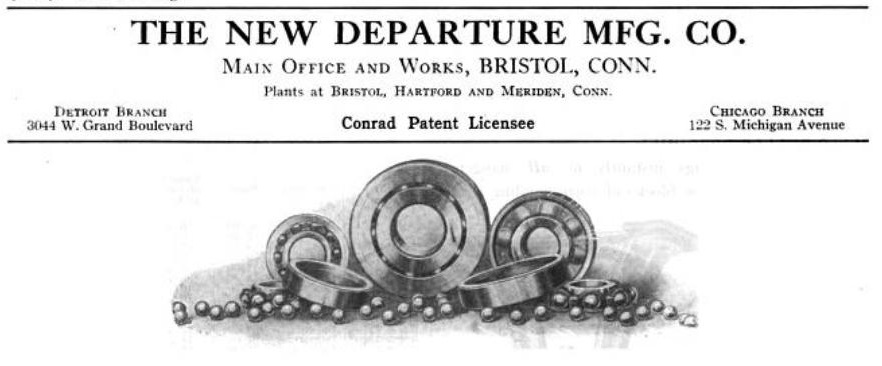
The New Departure Mfg. Co. Main Offices and Works, Bristol, Conn. Plants at Bristol, Hartford and Meriden, Conn.
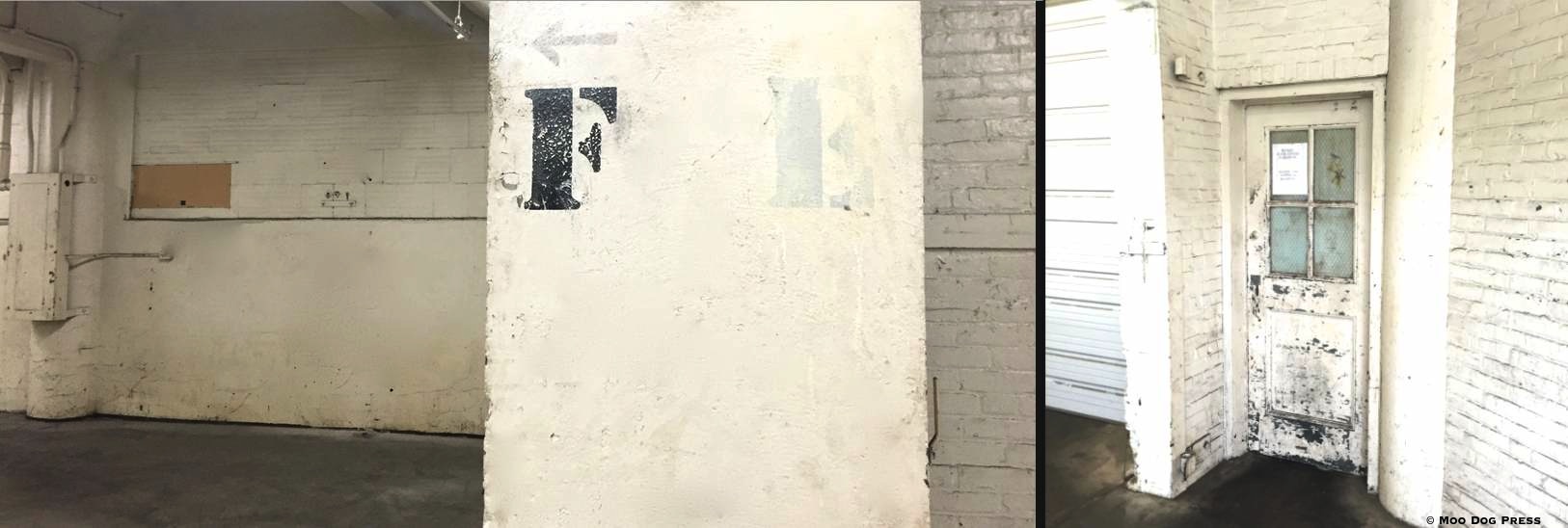
The former factory portion of the Pratt Street structure has its own beauty – built well in order to support all the machinery and functions that once took place here – some original features that can still be seen. Today, it is home to diverse enterprises that include machine shops. TW/MDP
The oldest portion of the fortress-like complex faces Pratt Street and originally was a woolen mill built by Jedediah Wilcox in 1848. Goods made there included carpetbags; later belts, corsets, and hoop skirts.
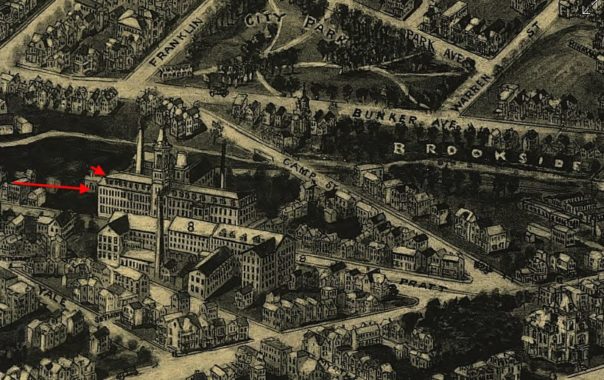
Aero view of Meriden, Connecticut, 1918. The arrows indicate the Wilcox woolen mill that sported a tower and other flourishes. The map includes an index to merchants and industry. Map from the archives of the Library of Congress. Note: The red arrows were added after cropping and sizing this image for display in this story. For those who would like to use the image, contact the editor.
From the GM Heritage Center, about the modern factory: “During the period from 1919 to 1933 a second plant, established in Elmwood (Hartford, CT), was abandoned and moved into a new facility in Meriden, CT, a lively industrial town of some 40,000 situated about 15 miles from Bristol.” Bounded by Camp Street and Center Street, the complex is roughly in the shape of a triangle. Parking for employees was also located across the street from the main entrance on Pratt. Inside the open floor portion of the structure are businesses that include machine shops and other manufacturers and service companies. Beautiful modernized office space with air-conditioned space and 14-foot high ceilings that display the massive exposed wooden beams are located in the oldest section that parallels Pratt Street.
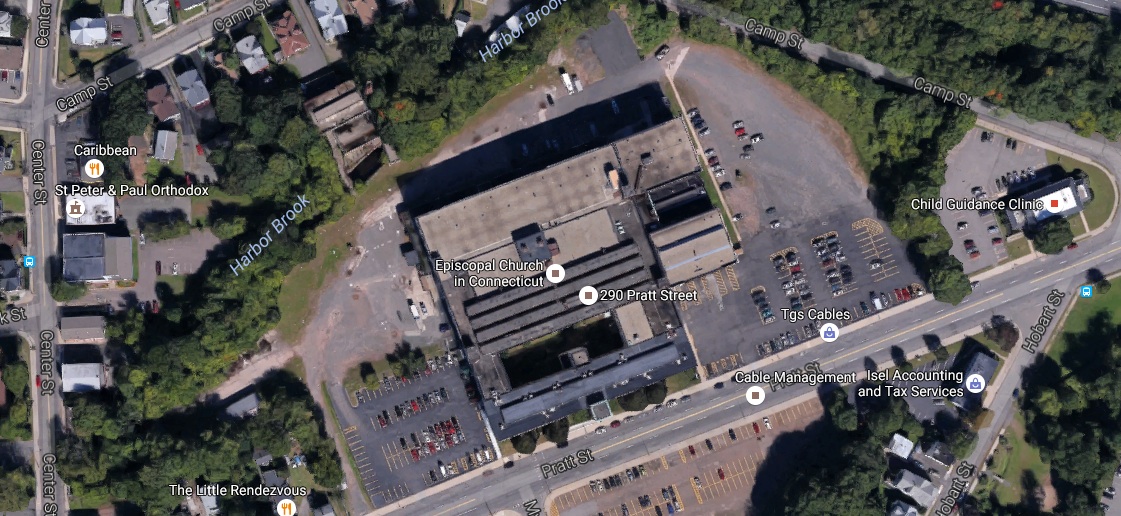
Seen in this aerial view by Google maps, the former New Departure factory in Meriden is now home to a variety of businesses and nonprofits.
This description of the high standards of what was manufactured there is from Condensed Catalogues of Mechanical Equipment: Volume 12, 1922: “New Departure ball bearings are manufactured in a New England factory where high standards of quality have been maintained for a quarter of a century and have given the manufacturers a favorable reputation throughout the world. The sincere aim of this company has been and is to manufacture a ball bearing approaching as closely to absolute perfection as is humanly possible. In furtherance of this attainment, a highly specialized corps of laboratorial and mechanical engineers is employed, special machinery, exclusive processes and methods have been devised, and an inspection and testing system is in operation that is more exacting in its requirements of quality than found in almost any other industry under the sun.”
From doorbells to safety brakes for bicycles to wartime innovation and production – here is a brief summary of the New Departure Manufacturing Company by Bill Bowman, from the GM Heritage Center web site.
“New Departure Bell Co. was formed in 1888 by brothers Albert and Edward Rockwell in Bristol, Connecticut, as a manufacturer of doorbells. They began operations at one end of a clock factory, manufacturing door-bells. Soon after, they branched out manufacturing various other products. In 1898, New Departure introduced the bicycle coaster brake and in 1903 they also began making brakes for belt and chain-driven motorcycles. Large quantities of bicycle front and rear wheel hubs were produced. In 1904, the Rockwells produced an automobile and then in 1907, the Rockwell Taxi Cab. In 1911, the automobile production ceased. In 1912, Albert organized the Yellow Cab Co., which went into receivership in 1913. In 1908, New Departure developed the double row bearing capable of handling both radial and thrust loads from either direction and in 1909 obtained a patent for it. In 1910, the company developed the angular contact or Radax single row bearing that took radial loads, as well as thrust loads from one direction. In 1916, New Departure, Hyatt Roller Bearing, Westom-Mott Axle, Remy Electric Co., Perriman Rim Co. and Dayton Engineering Laboratories were purchased by William Durant, president of General Motors, and put under the United Motors Corp. name with Alfred Sloan as President. In 1918, General Motors acquired United Motors outright with Sloan becoming a GM Vice President and in 1923 he became the President of General Motors. During World War II, New Departure produced ultra precision instrument bearings that were used in the Norden Bombsight, one of the U.S. Air Force’s most powerful weapons. In the 1950s, New Departure invented the Roller Clutch used in automatic transmissions, allowing for smoother shifting. In 1965, General Motors merged the New Departure Division and the Hyatt Roller Bearing Division into the New Departure-Hyatt Bearing Division. In 1986, New Departure-Hyatt Bearing exited the commercial ball bearing business, retaining only the ultra-precision aircraft engine bearing segment. In 1989, New Departure-Hyatt Bearing Division and Delco Moraine Division were merged to create the Delco Moraine-NDH Division. In 1992, the Delco Moraine-NDH Division merged with Delco Products and became Delco Chassis Division. In 1993, the aircraft bearing operation was discontinued ending the era of bearing manufacture. Today, New Departure and Hyatt are brands owned and sold by General Bearing Co. of New York.”
Note: In part two, more about the structure and present-day enterprises. And one interesting proposal for the future that could be built on the industrial framework from the past. More about a show once held here.
NOTE: The CT Mills — Making Places of Connecticut website only provides information on historic industrial properties in the state to encourage reuse of these buildings; we do not represent any past or present business or products. (A great resource to finding history.)
“You can learn about the many products made in Connecticut, the companies and workers who made them, and the processes they developed by visiting ConnecticutHistory.org, a program of CT Humanities, the business collections at the Thomas J. Dodd Research Center at UConn, the Connecticut Patents Project at the Connecticut State Library, manufacturing history at the Museum of Connecticut History, Today in Connecticut History, a joint program of the Office of State Historian and CT Humanities, or find one of our many museums and historical societies with industrial history collections at Experience CT Mills.
“For mill sites in Coventry, Hebron, Mansfield, Stafford, Tolland and Willington, see Lost Mill Sites, a blog of the many 18th and 19th century sites researched and documented by Richard N. Symonds, Jr.
“Through collaborative efforts, photographer Emery Roth has documented the distinctive architecture and disappearing industries in many of Connecticut's historic mill buildings. Check out Roth's blog to learn more.”
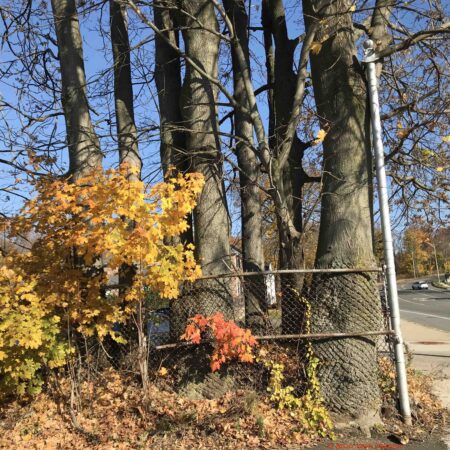
Thought cycad when seeing the bark patterning of this tree on the property facing Pratt Street. But it is actually the tree which has grown through the fencing.
Editor's note: This story was published originally on Aug. 16, 2016; and has been updated. Part two will follow.
“Our work involves compiling an inventory of known archaeological, historic sites as well as important geologic and geographic features and sacred indigenous places in the Connecticut River valley and cataloguing them using Arc/GIS mapping.”https://t.co/IPhso27uvI @eagletimesnh
— Moo Dog Press (@MooDogPress) August 26, 2023
I'm back from Scotland, and everywhere in the house, my Meemo is not. It was bearable while I was away, but being home is excruciating. Grief, grief, grief. pic.twitter.com/WkwP9CbXJA
— Silke Weineck (@silkiestmaria) August 8, 2023
Sittin' on Go! https://t.co/2GZE07SGeY
— Dorothy Ours (@HorseyGort) August 19, 2023

